Selective disruption of aurora C kinase reveals distinct functions from aurora B kinase during meiosis in mouse oocytes
- PMID: 24586209
- PMCID: PMC3937256
- DOI: 10.1371/journal.pgen.1004194
Selective disruption of aurora C kinase reveals distinct functions from aurora B kinase during meiosis in mouse oocytes
Abstract
Aurora B kinase (AURKB) is the catalytic subunit of the chromosomal passenger complex (CPC), an essential regulator of chromosome segregation. In mitosis, the CPC is required to regulate kinetochore microtubule (K-MT) attachments, the spindle assembly checkpoint, and cytokinesis. Germ cells express an AURKB homolog, AURKC, which can also function in the CPC. Separation of AURKB and AURKC function during meiosis in oocytes by conventional approaches has not been successful. Therefore, the meiotic function of AURKC is still not fully understood. Here, we describe an ATP-binding-pocket-AURKC mutant, that when expressed in mouse oocytes specifically perturbs AURKC-CPC and not AURKB-CPC function. Using this mutant we show for the first time that AURKC has functions that do not overlap with AURKB. These functions include regulating localized CPC activity and regulating chromosome alignment and K-MT attachments at metaphase of meiosis I (Met I). We find that AURKC-CPC is not the sole CPC complex that regulates the spindle assembly checkpoint in meiosis, and as a result most AURKC-perturbed oocytes arrest at Met I. A small subset of oocytes do proceed through cytokinesis normally, suggesting that AURKC-CPC is not the sole CPC complex during telophase I. But, the resulting eggs are aneuploid, indicating that AURKC is a critical regulator of meiotic chromosome segregation in female gametes. Taken together, these data suggest that mammalian oocytes contain AURKC to efficiently execute meiosis I and ensure high-quality eggs necessary for sexual reproduction.
Conflict of interest statement
The authors have declared that no competing interests exist.
Figures
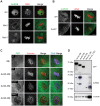


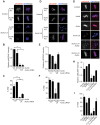

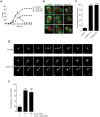
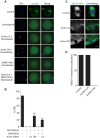
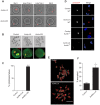
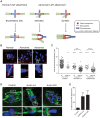
Similar articles
-
Genetic Interactions between the Aurora Kinases Reveal New Requirements for AURKB and AURKC during Oocyte Meiosis.Curr Biol. 2018 Nov 5;28(21):3458-3468.e5. doi: 10.1016/j.cub.2018.08.052. Epub 2018 Oct 25. Curr Biol. 2018. PMID: 30415701 Free PMC article.
-
Identification and characterization of Aurora kinase B and C variants associated with maternal aneuploidy.Mol Hum Reprod. 2017 Jun 1;23(6):406-416. doi: 10.1093/molehr/gax018. Mol Hum Reprod. 2017. PMID: 28369513 Free PMC article.
-
Age-dependent integrity of the meiotic spindle assembly checkpoint in females requires Aurora kinase B.Aging Cell. 2021 Nov;20(11):e13489. doi: 10.1111/acel.13489. Epub 2021 Oct 26. Aging Cell. 2021. PMID: 34704342 Free PMC article.
-
Specialize and Divide (Twice): Functions of Three Aurora Kinase Homologs in Mammalian Oocyte Meiotic Maturation.Trends Genet. 2017 May;33(5):349-363. doi: 10.1016/j.tig.2017.03.005. Epub 2017 Mar 27. Trends Genet. 2017. PMID: 28359584 Free PMC article. Review.
-
The Molecular Mechanism of Aurora-B Regulating Kinetochore-Microtubule Attachment in Mitosis and Oocyte Meiosis.Cytogenet Genome Res. 2024;164(2):69-77. doi: 10.1159/000540588. Epub 2024 Jul 27. Cytogenet Genome Res. 2024. PMID: 39068909 Review.
Cited by
-
Dual roles of oxostephanine as an Aurora kinase inhibitor and angiogenesis suppressor.Int J Mol Med. 2022 Nov;50(5):133. doi: 10.3892/ijmm.2022.5189. Epub 2022 Sep 14. Int J Mol Med. 2022. PMID: 36102296 Free PMC article.
-
Haspin kinase regulates microtubule-organizing center clustering and stability through Aurora kinase C in mouse oocytes.J Cell Sci. 2016 Oct 1;129(19):3648-3660. doi: 10.1242/jcs.189340. Epub 2016 Aug 25. J Cell Sci. 2016. PMID: 27562071 Free PMC article.
-
Kinase PLK1 regulates the disassembly of the lateral elements and the assembly of the inner centromere during the diakinesis/metaphase I transition in male mouse meiosis.Front Cell Dev Biol. 2023 Jan 13;10:1069946. doi: 10.3389/fcell.2022.1069946. eCollection 2022. Front Cell Dev Biol. 2023. PMID: 36733339 Free PMC article.
-
FREEDA: an automated computational pipeline guides experimental testing of protein innovation by detecting positive selection.bioRxiv [Preprint]. 2023 Feb 28:2023.02.27.530329. doi: 10.1101/2023.02.27.530329. bioRxiv. 2023. Update in: J Cell Biol. 2023 Sep 4;222(9):e202212084. doi: 10.1083/jcb.202212084. PMID: 36909479 Free PMC article. Updated. Preprint.
-
A PP2A-B56-Centered View on Metaphase-to-Anaphase Transition in Mouse Oocyte Meiosis I.Cells. 2020 Feb 7;9(2):390. doi: 10.3390/cells9020390. Cells. 2020. PMID: 32046180 Free PMC article. Review.
References
-
- Hassold T, Chiu D (1985) Maternal age-specific rates of numerical chromosome abnormalities with special reference to trisomy. Hum Genet 70: 11–17. - PubMed
-
- Hassold T, Hall H, Hunt P (2007) The origin of human aneuploidy: where we have been, where we are going. Hum Mol Genet 16 Spec No. 2: R203–208. - PubMed
-
- Hassold T, Hunt P (2001) To err (meiotically) is human: the genesis of human aneuploidy. Nat Rev Genet 2: 280–291. - PubMed
-
- Jones KT (2008) Meiosis in oocytes: predisposition to aneuploidy and its increased incidence with age. Hum Reprod Update 14: 143–158. - PubMed
Publication types
MeSH terms
Substances
Grants and funding
LinkOut - more resources
Full Text Sources
Other Literature Sources
Molecular Biology Databases
Miscellaneous

